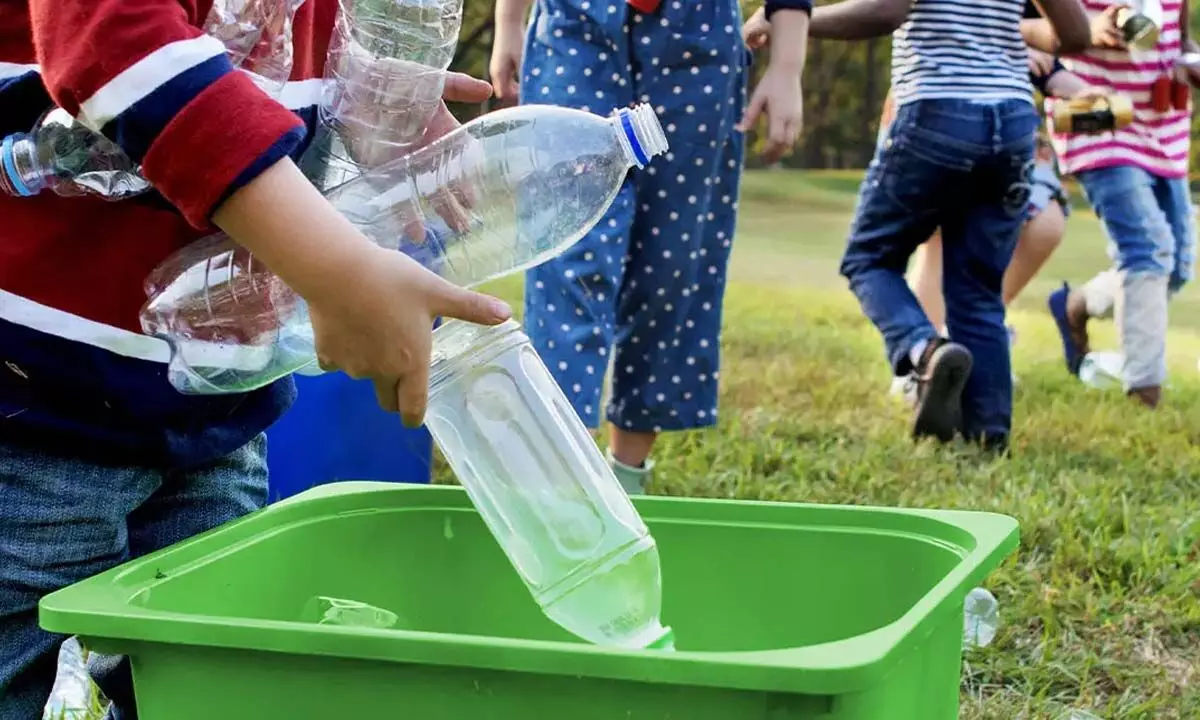Kids learning to conserve environment
Fifteen-year-old Soumyadeep Bhuniya doesn’t remember anything of the fateful day in 2009, when super-cyclone Aila pummeled their village in Patharpratima block of South 24-Parganas, West Bengal.
image for illustrative purpose

Fifteen-year-old Soumyadeep Bhuniya doesn't remember anything of the fateful day in 2009, when super-cyclone Aila pummeled their village in Patharpratima block of South 24-Parganas, West Bengal. He was only a toddler at the time. All he remembers are the horrifying stories from his parents, neighbours and relatives. Soumyadeep is not alone. A recent UNICEF report on The Children's Climate Risk Index brings to the fore the calamitous future that Soumyadeep and his generation stare at.
According to the report, 400 million children (nearly 1 in 6 children globally) are at present highly exposed to cyclones. This is likely to get worse as high-intensity cyclones increase in frequency, rainfall intensity grows, and cyclone patterns shift. Around 330 million children (1 in 7 children globally) are highly exposed to riverine flooding. This is likely to worsen as glaciers melt, and precipitation increases due to higher water-content in the atmosphere as a result of higher average temperatures. Increasingly catastrophic droughts, fires and storms are forecast to become even worse as our planet continues to warm. Important food and water systems will fail and entire cities are expected to succumb to destructive floods.
The encouraging news is that the same Soumyadeep, thanks to an initiative by CRY and Kaajla Janakalyan Samity, now leads a Green Scout team that visits door to door in the community and convinces people to plant trees and nurture them. The more the greenery, the less the amount of carbon dioxide in the air – the best and the easiest remedy to reverse the adverse of effects of climate change. The 15-year-old has managed to stop the use plastic in his home and he and his team asks the neighbours to do the same. Plastic waste can choke the rivers and propel erosion at the edges, the young crusader tells people. This is especially relevant for the topography he lives in – rivers and riverines crisscrossing each other and small villages being shielded from the impending fury of swirling waters by mud or cement embankments. As many as 300 children from villages in Patharpratima and Gopalnagar are taking supplementary lessons at centres run by these organisations.
Mind you that Patharpratima and Gopalnagar blocks are located in a unique geographical location - the mangrove belt. Successive cyclones including Amphan (2020) and Yaas (2021) wreaked havoc on Sagardwip, Patharpratima, Kakdwip, Namkhana and Gosaba. Agricultural land has been inundated and destroyed, mangroves uprooted and river embankments damaged completely. An initiative has also been taken involving local women to plant mangrove trees on the river banks to prevent erosion, with help from the gram panchayats, forest department and villagers.
We need to conserve the environment and for that it's important to teach the young generation simple ways to do that. What the children are learning today, their parents will learn from them tomorrow. And soon enough, the awareness will spread in the community. Moves are also afoot to carry out online campaigns through video clips and screen short films on environmental issues to boost understanding and awareness among students and the community.
The whole idea aims at grooming young students and making them flag-bearers of a sustained campaign on climate change and the need to conserve and protect the environment. If this small hamlet in Bengal has done it, should others be far behind?

